Nu kan du se de första förslagen på konst i Västlänken! Eftersom konsten kommer in så tidigt kan den påverka utformning av hela områden. Kronotopia: Centralen och Olskroken är steg 1 i Trafikverkets och Statens konstråds tävling om den konstnärliga gestaltningen. Förslagen visas på Göteborgs stadsmuseum till 11 december. Vinnarna tillkännages i början av 2017. Då startar också steg 2 i tävlingen som omfattar stationerna Haga och Korsvägen.
Centralen: Tre idéförslag
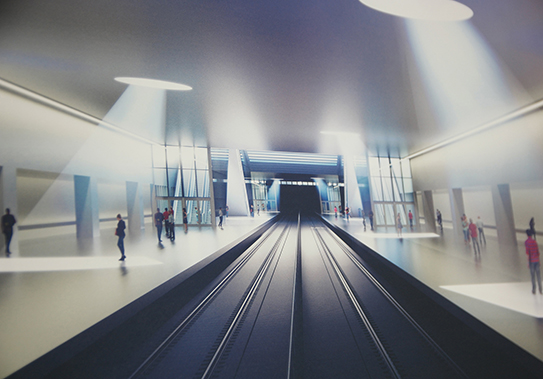
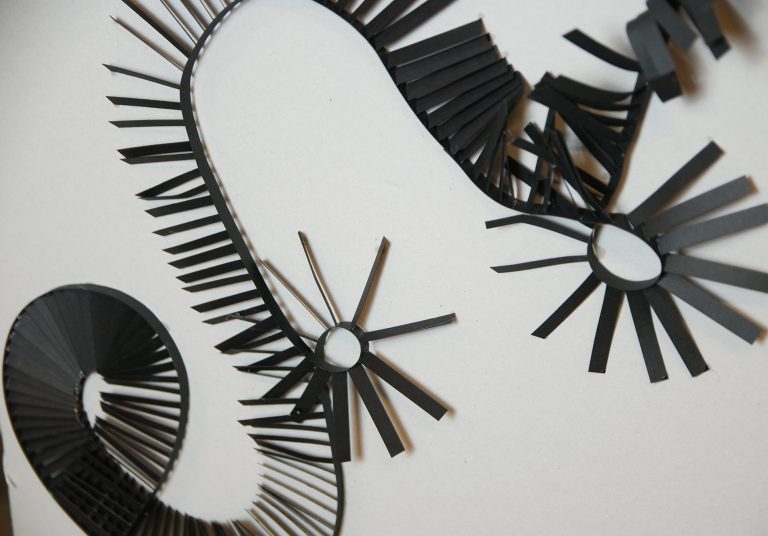
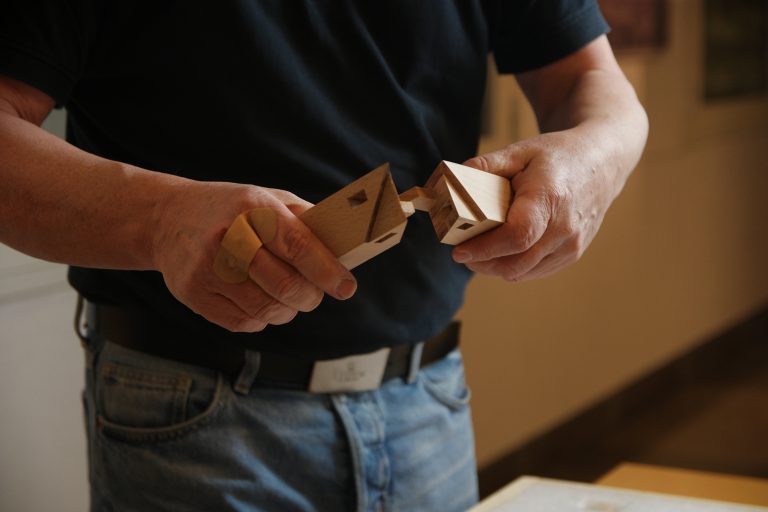
SPATIAL LIGHTHOUSE – UTDRAG FRÅN IDÉFÖRSLAGET
”The work Spatial Lighthouse, conceived for the platforms of the proposed Gothenburg Central Station, intends to add a physical perspective of time and space, connecting the station’s architecture to the movement of the trains as they progress between stops. In dialogue with the motion of the trains, are the stories of passengers from different epochs who passed through the city, engraved into the surfaces of the central part of the platforms. The Spatial Lighthouse uses light as a symbol of time through movement, connecting Gothenburg’s important harbor history with the city’s new transport developments.”
THE ARRIVAL OF A TRAIN – UTDRAG FRÅN IDÉFÖRSLAGET
”It is a sculpture based on a form of a deconstructed staircase, at a scale of 1 : 1. It’s simple metal structure consists of the stair risers and a stringer connecting these risers, with visible rivets. The other side part of the stairs sticks out of the construction. The whole work is bent and twisted and forms a new dynamic composition, a kind of a metal relief. I would like to place this construction suspended beneath the ceiling in the main hall or over the railway, but I can imagine that it could also descend down the walls. The static architectural element tums into the dynamic form, which reminds me of the old driving wheels of a locomotive. It is associated with a shot from the first film of the Lumiere brothers: L’arrivee d’un train en gare de La Ciotat, where the camera records in close-up the rotating wheels of the train.”
TONGUE AND GROOVE – UTDRAG FRÅN IDÉFÖRSLAGET
”Modern immigration and assimilation within nation states evokes an image of 191h century steamboats and huddled bodies moving in and out of ports around the globe. The movement and exchange of people, goods and ideas, and what we call immigration today finds its roots in the forging of the Silk Road, stretching back to circa 200 AD. This trade route was the initial connection between Eastern and Western cultures, linking China to the Mediterranean Sea. Historically, the Silk Road is book-ended in time by the Han Dynasty and the discovery of the New World in the 15th century.To understand migration and immigration on a deep level, this proposal offers a two-fold consideration of historical Chinese building techniques as a way to connect modern immigration as well as the rapid movement of people through spaces such as an underground transportation system, to its ancestral seed and historical precedent.”
Olskroken: Två idéförslag
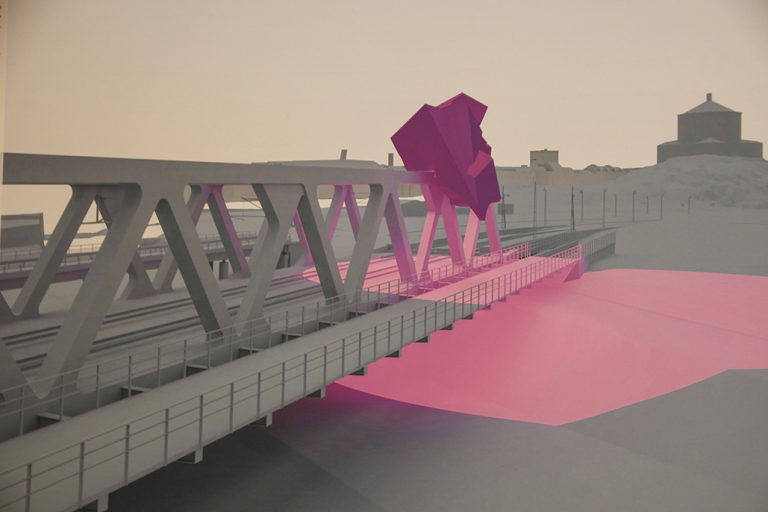
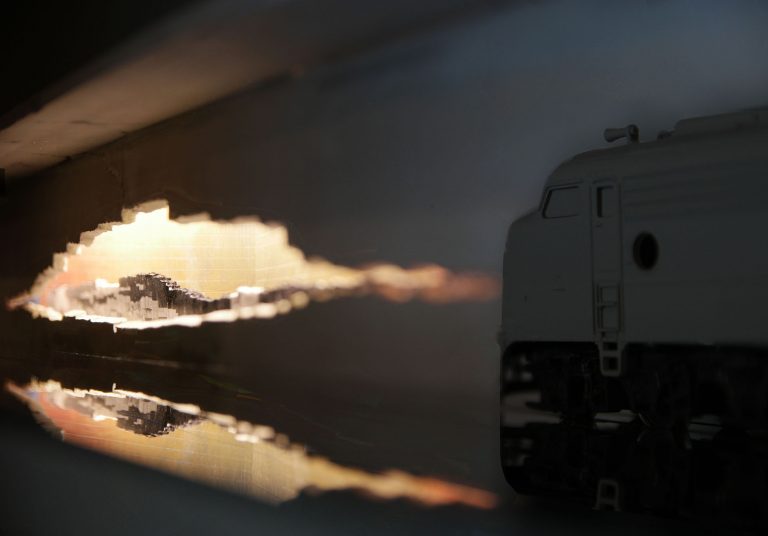
BLINK – UTDRAG FRÅN IDÉFÖRSLAGET
”Imagine a pink spotlight high up in the sky. Its strong magenta cone of light carves out an area where a bridge, a footpath and a highway coincide. Lasting only for a short moment in time that magenta flicker´s remains has coloured the bridge and the space below it. It´s residue has dramatically materialized as a pink rock situated on the bridge. The pink rock marks that incident of transformation for everybody from near and far to see in Gothenburg. It marks it for travellers, drivers and pedestrians.Apparently pink is the most visible colour in our environment. In Australasia, pink has now become the colour for lifeguards on the beach. It is the new colour of safety and alert.”
TUNNEL VISION – UTDRAG FRÅN IDÉFÖRSLAGET
”A passenger train dives into a tunnel. A small winding cut in the tunnel’s concrete walls catches the passenger’s eyes. They follow the line it traces. The line expands into an opening. It then expands further to reveal a glowing cavity. Viewed while passing at 50 km/hr, the orange glow hints at a possible sunset and repeated lines in the background appear in stroboscopic motion. The many objects in the foreground blend to form a series of waves on the high seas. But then, the train abruptly slows and then stops alongside this mysterious window. When viewing the scene stationary, the contents of the room become legible. What originally appeared to be a sun setting over a vast ocean is a diorama, not unlike one seen time and again in natural history museums. The diorama offers a snapshot of an underground chamber, a vault of sorts, lined with hundreds of safety deposit boxes. It’s not clear what is stored inside the walls. The landscape in the foreground is now clearly a pile of boxed, wrapped, and crated artifacts. These artifacts, even when boxed and wrapped, appear non-Swedish, foreign, from elsewhere. They also bear the marks of a long journey. Where did these come from? What are they doing here? Is it possible, that right here, under one of its most treasured sites, Gothenburg has been storing some of the world’s most threatened cultural treasures? Are they here by choice or were they forced here? Did they migrate or were they kidnapped? Is this a big loot or a great refuge? How long have these objects been here?”